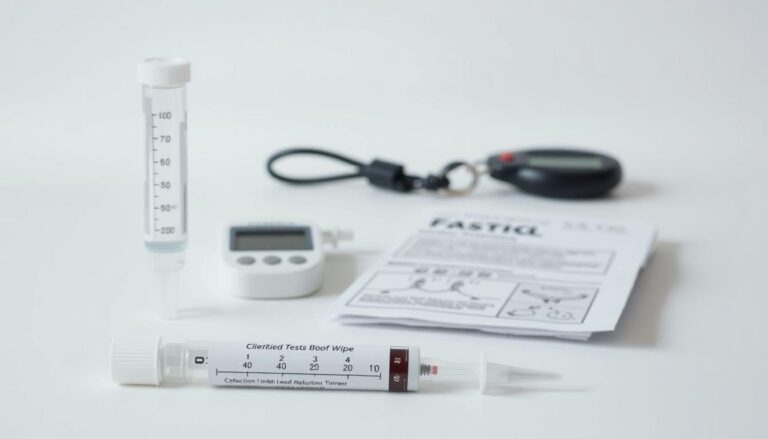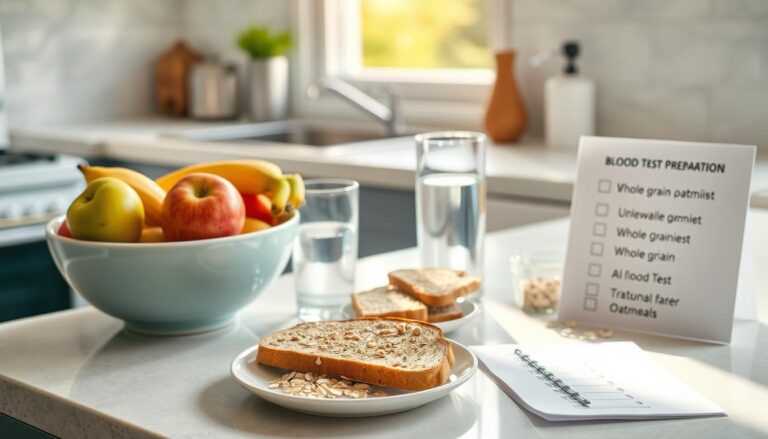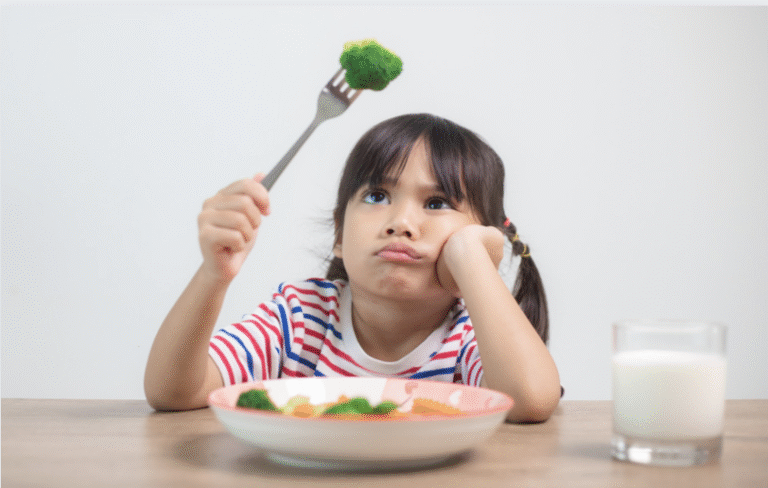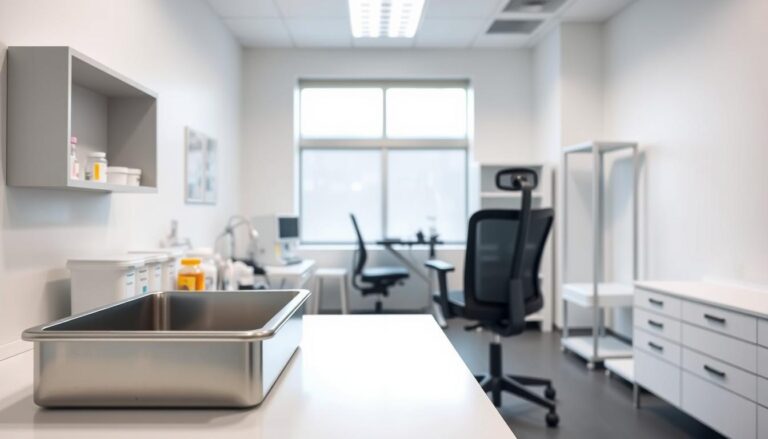Home Blood Collection for Elderly: Special Care Guidelines
As we get older, our bodies change a lot. Our blood vessels get less elastic and our skin gets thinner. This makes it harder to take blood from elderly patients. So, how do we make sure blood collection at home is safe and comfortable for them?
We will look at the key steps and tips for blood draws at home for seniors. This includes services like in-home phlebotomy and blood tests done at home.
Home blood sample collection services are becoming more popular. They are great for the elderly and those who live far from hospitals. Mobile blood collection is a convenient option. It lets seniors schedule blood draws at their own pace, reducing stress from hospital visits.
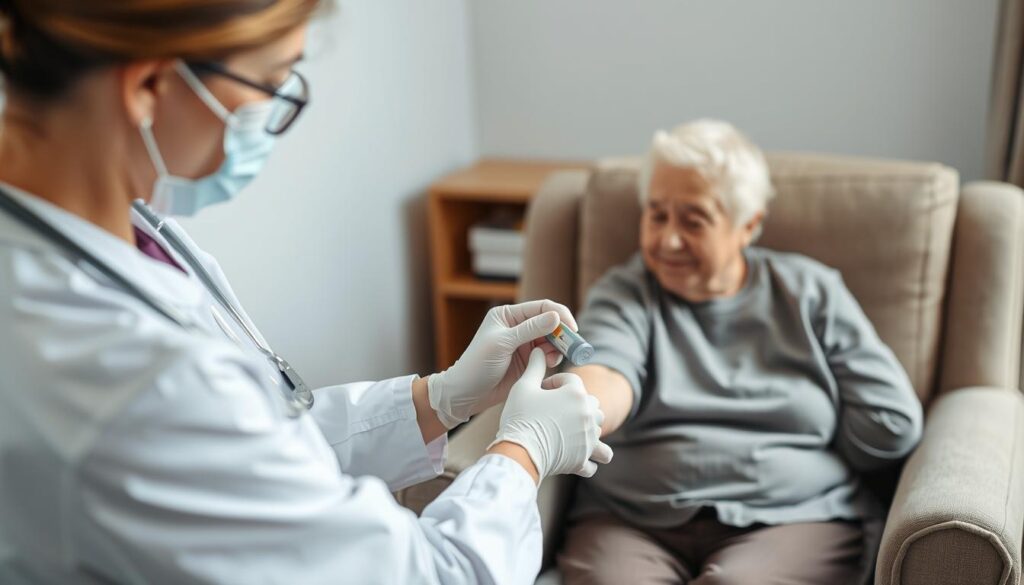
We aim to give clear instructions for blood collection at home for seniors. We focus on their comfort and safety. We’ll talk about the importance of staying hydrated, using gentle needles, and clear communication to avoid problems.
By understanding how aging affects our bodies and following special care guidelines, we can make blood collection at home safe and comfortable. This includes using services like in-home phlebotomy and blood tests done at home, which often come with blood test abbreviations for easy reference.
Essential Preparations for Elderly Home Blood Collection
We know how important it is to prepare well for blood sampling at home for seniors. We need the right medical supplies and equipment. This includes gloves, tourniquets, and needles to make the process safe and easy. It’s also key to plan carefully to make the environment comfortable for the patient, reducing stress.
It’s vital to make blood collection at home convenient for seniors. Geriatric home phlebotomy services must meet their special needs. Senior-friendly blood collection at home means paying attention to every detail. This includes using the right needle size and following infection control rules.
Required Medical Supplies and Equipment
The following supplies are essential for elderly home blood collection:
- Gloves
- Tourniquets
- Hypodermic needles
- Blood collection tubes
- Labels and requisition forms
Having these supplies ready ensures a safe and efficient blood collection for our elderly patients.
Creating a Comfortable Collection Environment
To make the collection area comfortable, we suggest the following:
| Recommendation | Description |
|---|---|
| Seated time | At least 5 minutes of seated time before venipuncture |
| Hand hygiene | Effective hand hygiene before and after every patient procedure |
| Tourniquet application | Not more than one minute to prevent hemoconcentration |
By following these tips, we can make the blood collection process safe and comfortable for our elderly patients.
Understanding the Home Blood Draw Process for Seniors
Senior home blood draws can seem scary, but they’re a key part of health care. Geriatric blood sample collection is done with great care. It’s a service that comes to you, making it easier for seniors to get tested at home.
Testing blood at home is vital for health checks. It helps check cholesterol, blood sugar, and organ health. A trained professional uses clean needles and alcohol to keep everything safe and clean.
Here are some important things to know about the process:
- Phlebotomists use a thin needle to puncture a vein, which may cause mild discomfort.
- A tourniquet is applied to the upper arm to increase blood flow and make veins more prominent.
- Seniors using blood-thinning medications or aspirin should inform their healthcare provider, as these can influence bleeding and clotting.
Knowing what to expect can make seniors feel more at ease. Mobile blood draw services let seniors get the care they need without leaving home.
Conclusion: Ensuring Safe and Comfortable Blood Collection at Home
Ensuring safe and comfortable at-home blood draws for seniors is very important. By following best practices in in-home blood collection service for elderly, we can reduce risks. This includes preparing the area well, using the right senior at home blood draw methods, and focusing on the needs of housebound patient phlebotomy.
It’s key to follow safety rules closely, as in-home blood sampling for elderly patients might face more risks. Properly disposing of sharps, using protective gear, and handling samples carefully can stop the spread of mobile blood collection for seniors diseases. Making the area comfortable and well-lit can also lower the chance of accidents, making the senior at home blood draw safe and calm.
Our main aim is to help elderly patients manage their health with easy and reachable at-home blood draws for seniors. With a caring and personalized approach, we can gain their trust. This encourages them to keep up with regular health checks, which can greatly improve their health.

